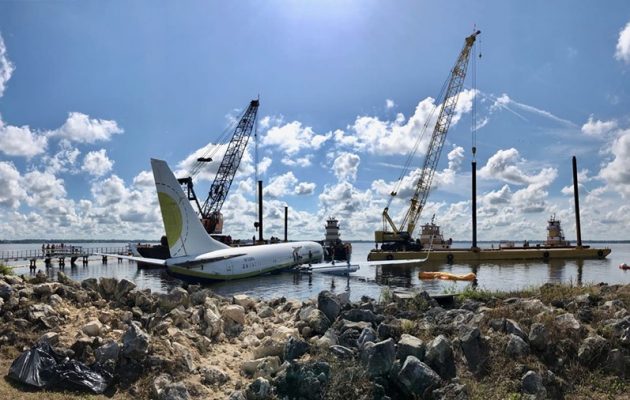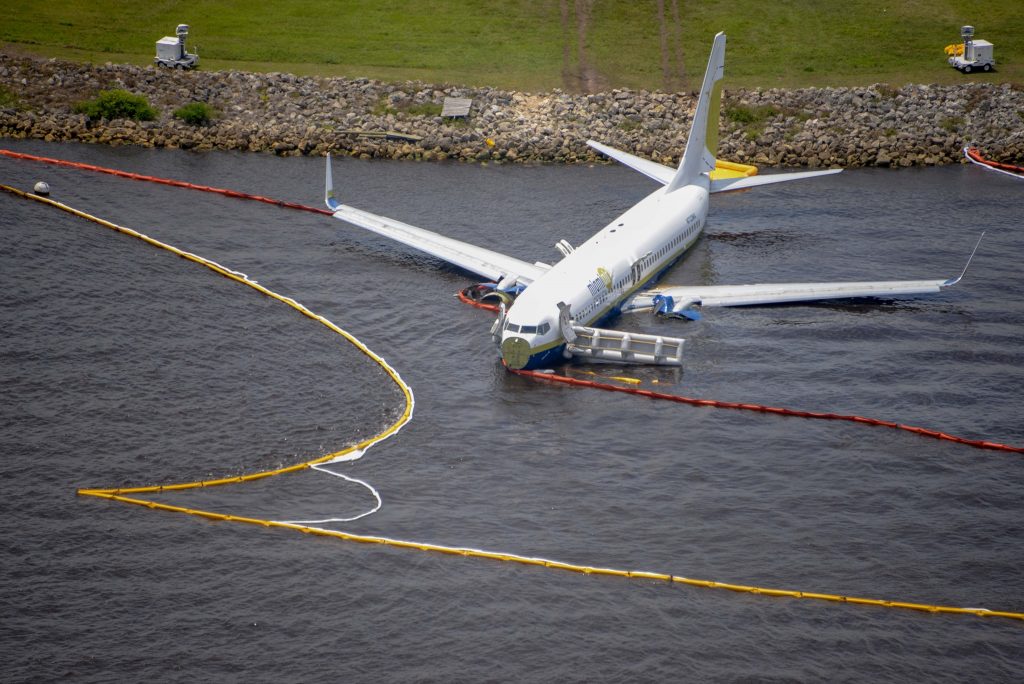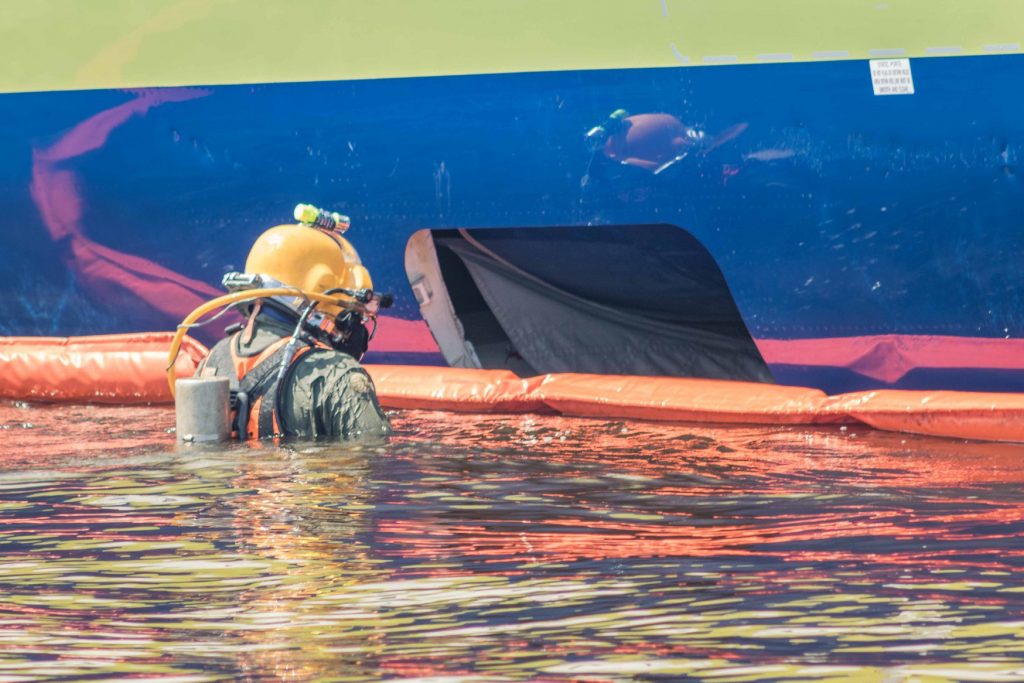NAS Jacksonville scene of late night plane crash
Posted on May 7, 2019 By Editor Articles, Neighborhood News, Top Stories

The National Transportation Safety Board (NTSB) is investigating what officials are calling a “mishap” after a Boeing 737-800 chartered by Miami Air overshot the runway at Naval Air Station Jacksonville (NAS Jax) on Friday, May 3 at approximately 9:40 p.m. and slid into the St. Johns River.
On board were 136 passengers en route to Jacksonville from Naval Station Guantanamo Bay, Cuba, as well as seven crew members. No fatalities occurred, although one dog and two cats stowed in the pressurized cargo hold did not survive. One animal that traveled in the cabin was safely removed by its owner during evacuation.
Minor injuries were treated at the scene of the crash, with 22 passengers requiring additional treatment taken to area hospitals. All patients had been released by late Saturday afternoon.

Miami Air International President and CEO Kurt Kamrad sent a letter to the passengers offering each $2,500 in a goodwill gesture, while noting acceptance of the payment would not affect their rights. Additionally, as baggage was retrieved from the hold, it would be cleaned and released after being catalogued.
Accounts indicate the aircraft was operating with a 15-knot (17 mph) tailwind and an inoperable left thrust reverser when crew asked to divert to a different runway at the base. Upon touching down, the pilots were unable to prevent the plane from skidding off the runway into four to six feet of water. Other accounts note the passengers were told prior to takeoff in Cuba there were problems with the cabin’s air-conditioning.
Fuel spillage was contained with booms, which had to be repositioned on Sunday, May 5 after a late morning storm created a bit of havoc at the accident site. Approximately 1,200 gallons of jet fuel were removed by end of day May 6 and salvage operations began on May 7.

By Kate A. Hallock, Resident Community News




 (1 votes, average: 5.00 out of 5)
(1 votes, average: 5.00 out of 5)Miami Air Flight 293 crash; NAS Jacksonville: May 3 2019; St Johns River; Guantanamo Bay Cuba





